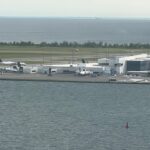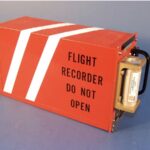A lot has been said and written about air disasters in general, and the recent crash of AI 171, a flight from Ahmedabad to Gatwick (London), in particular. The flight was carrying 169 Indians, 53 Britons and seven Portuguese nationals in addition to a lone Canadian (a woman dentist).
The plane, a Boeing 787-8 Dreamliner, crashed just minutes after taking off from Ahmedabad International Airport.
Going by the Aviation Safety Network database, it was the first crash of a Boeing 787 aircraft. It is not only Air India, the national flag carrier of India, that has Boeing 787-8 Dreamliners in its fleet; Air Canada has eight Boeing 787-8 aircraft in its fleet and 32 Boeing 787-9 Dreamliners. Another Canadian carrier, WestJet, has seven Boeing 787-9 Dreamliners in its fleet.
Incidentally, the ill-fated Air India Dreamliner took off from Ahmedabad, one of the eight Indian airports maintained by Adani Airport Holdings Ltd (AAHL). Of late, the Indian aviation industry has quickly moved from the public sector to the public-private sector mode. These are not only the airports, but also the airlines that have witnessed a change in management and control. Air India was taken over by the Tata Group in 2022.
Though the civil aviation sector has witnessed phenomenal growth in India, issues related to safety have at times been compromised.
But has the growth of the aviation industry been supplemented by the trained staff, including pilots, cabin crew and ground staff? Both Indigo and Air India have been announcing their ambitious plans to expand their fleet. But are they getting a sufficient number of trained and experienced pilots to operate the new, sophisticated and technologically advanced aircraft?
The issue was highlighted in one of my latest blogs, reproduced below:
“Who is killing civilian pilots?”
The death of a promising Air India pilot earlier this month (April) has set in motion an animated debate about the health and well-being of pilots employed by national and international airlines. Did Captain Arman Singh Chaudhary have his promising career cut short due to the non-implementation of Flight Duty Time Limitations (FDTL)?
Captain Arman Singh Chaudhary, an Air India Express pilot, reportedly died of a cardiac arrest shortly after landing a Srinagar – Delhi flight earlier this month.
His death was not an isolated incident of its kind. There had been instances when pilots had died in distress while on duty. In August 2023, an IndiGo pilot, Manoj Balasubramanian, fell unconscious while on duty at Nagpur airport and passed away soon after. “He took ill at Nagpur airport and was rushed to the hospital where he unfortunately passed away,” Indigo Airlines had said in a statement on August 17, 2023.
A substantial percentage of air disasters are blamed on “human factors” or human failures. “Fatigue” or “overload” on pilots who fly more than the stipulations is equally important causes of air accidents.
“Fatigue” or long hours at the wheel used to be the major factor for devastating accidents on roads, as poorly paid truck and bus drivers would doze off while at the wheel, leading to huge losses of human lives. Now, the same “fatigue” factor has come to worry the aviation sector.
The deaths of pilots have been sending alarming signs for a long time. Intriguingly, little or no serious attention is paid to such “unnatural deaths” of an extremely scarce trained manpower. The question being asked in aviation circles is: How many pilots have lost their lives due to the non-implementation of FDTL rules as per standards of the Federal Aviation Administration (FAA) and the European Union Aviation Safety Agency (EASA)?
Pilot FDTL Rules are designed in favor of corporate airlines so that they can make more money at the expense of pilots. Since the issue has been a subject of judicial adjudication, there is a court direction that the new FDTL rules be implemented in a phased manner from July 1. The airlines, as the reports indicate, are reluctant to implement these directions as they would be forced to employ more and more pilots.
Trained and experienced individuals are an asset for any airline. Though they are highly paid, but they always carry a huge responsibility on their shoulders by flying hundreds of passengers across different destinations day in and day out.
Pilots are assets as they are heavily paid. If civil aviation is considered one of the safest modes of travel or communication, it is because of the competence of pilots.
Under the present rules, a commercial pilot is not supposed to travel more than 35 hours a week. But revenue crazy airlines are expanding their operations by flouting the FDTL regulations with impunity.
The Pilots’ associations have been seeking the intervention of the courts. The corporate houses, as major airlines in India are, just want profits and profits. Their appetite for more and more revenue is not getting satiated.
While airlines want their cake to grow bigger, pilots are getting rubbed on the wrong side. Prima facie, fatigue is killing pilots as they are overworked.
Though the Director-General of Civil Aviation has ordered an investigation into the circumstances leading to the death of a young and bright pilot, Capt. Arman Singh Chaudhary. He, according to reports, wanted to report for the fateful flight. But his plea was turned down, and he was made to fly. All these things are expected to come out when the Inquiry Committee set by the Director-General of Civil Aviation comes out with its report in its stipulated six months.
The aviation industry has its issues and problems. While the managements want more and more revenue, the deserved attention to the well-being and health of the crew and other stakeholders is compromised. This is supported by a statement made at a FAA symposium in 2016.
“It has been estimated that 4-7 per cent of civil aviation incidents and accidents can be attributed to fatigued pilots. In the last 16 years, fatigue has been associated with 250 fatalities in air carrier accidents.” Robert Sumwalt, NTSB vice chairman, said at an FAA symposium in July 2016.
The ball is now in the court of the Union Ministry of Civil Aviation as well as its front agency, the Director-General of Civil Aviation.
Fingers have also been raised at the growing control of the private sector not only for the operation, management and development of airports but also on sensitive issues like security and safety of air travel. Some big players already have their own security teams in operational mode at important airports that are generally under the operational, management and maintenance control of private players. The role of the state agencies, including paramilitary forces, has been marginalized.
Introduction of multiple layers of security has also been reportedly responsible for the growing incidence of “conflict of interest” between private agencies and the state paramilitary agencies. While the personnel of the State paramilitary forces are deployed at airports with proper training, the same cannot be said of the private agencies engaged by the private players given the mandate to operate, maintain and manage important airports.
Going by its website, the Adani Group (AAHL) claims that it made its maiden venture into the airports sector by emerging as the highest bidder for the operation, management, and development of six airports: Ahmedabad, Lucknow, Mangalore, Jaipur, Guwahati, and Thiruvananthapuram. It signed concession agreements with the Airports Authority of India for all six airports.
AAHL also holds a 73 per cent stake in Mumbai International Airport Ltd, which in turn holds a 74% stake in Navi Mumbai International Airport Ltd. With eight airports in its management and development portfolio, AAHL is India’s largest airport infrastructure company, accounting for 25% of passenger footfalls and 33 per cent of India’s air cargo traffic.
“The Adani Group is committed to offering best-in-class airport infrastructure to passengers, ensuring a seamless and secure airport experience. Through Adani Airports, it envisions redefining the city-airport relationship by building shared facilities that cater to the ever-evolving global travel, lifestyle, and work requirements,” claims the website.
Other than airports, the most important component of the aviation sector is the airlines. The government-run or public sector airlines no longer hold sway. At present, the biggest player is Indigo as it has become one of the fastest-growing low-cost carriers in the world and the largest airline in India. Its success has been attributed to its unique business model, which reduces costs.
According to Wikipedia, it operates a single type of aircraft, the Airbus A320 family, in a similar seating configuration, which simplifies crew training and maintenance. The airline strikes bulk deals with Airbus, reducing unit costs. The airline targets a quick, 20-minute turnaround time to prepare the aircraft for the next flight, ensuring planes fly about 12 hours per day. Employees share multiple roles, with a check-in staff doubling as baggage handlers.
In July 2023, the Indian aviation controlling authority Directorate General of Civil Aviation, imposed a fine of ₹30 lakh (US$35,000) on IndiGo for certain systemic deficiencies concerning documentation pertaining to operations, training, and engineering procedures. In March 2025, the Income Tax Department imposed a penalty of ₹944.20 crore (US$110 million) on InterGlobe Aviation, IndiGo’s parent company, for the assessment year 2021-22.
With headquarters in Gurugram, Indigo has become the largest airline in India by passengers carried and fleet size, with a 64.1% domestic market share as of April 2025. It is the second largest Asian airline and one of the largest in the world in terms of passengers carried, with more than 31.9 million passengers carried in the fourth quarter of 2025. As of June 2025, IndiGo operates over 2,200 daily flights to 127 destinations – 91 domestic and 36 international. It operates cargo services under its subsidiary, IndiGo Cargo. Its primary hub is at the Indira Gandhi International Airport, Delhi. Its turnover is now touching 90,000 crores with a net profit after taxes past 8,000 crores.
Established as a private company by Rahul Bhatia of InterGlobe Enterprises—an Indian multinational conglomerate based in Gurugram— and Rakesh Gangwal in 2005. It took delivery of its first aircraft in July 2006 and commenced operations a month later, on August 4, 2006. The airline became the largest Indian carrier by passenger market share in December 2012. The company went public in October 2015.
Air India is the flag carrier of India with its main hub at Indira Gandhi International Airport in Delhi and secondary hubs at Kempe Gowda International Airport in Bengaluru and Chhatrapati Shivaji Maharaj International Airport, alongside several focus cities across India. Headquartered in Gurugram, Haryana, India, the airline is owned by Air India Limited, which is owned by the Tata group (74.9 per cent) and Singapore Airlines (25.1 per cent).
As of November 2024, the airline serves 102 domestic and international destinations, operating a variety of Airbus and Boeing aircraft and is the second-largest airline in India in terms of passengers carried after Indigo. Air India became the 27th member of Star Alliance on July 11, 2014.
Of all airlines in India, Air India has one of the worst track records of air and passenger safety.
Some major air crashes involving India
June 12, 2025
Air India Flight 171: A London-bound Air India Boeing 787-8 Dreamliner crashed into a residential area in Meghani Nagar shortly after take-off from Ahmedabad, with 242 people onboard. Several casualties are feared. The flight was piloted by Capt. Sumit Sabharwal and co-pilot Clive Kunder.
August 7, 2020
Air India Express Flight 1344: During the COVID-19 pandemic, Air India Express Flight 1344 crashed while landing in heavy rain at Kozhikode airport. The repatriation flight overshot the tabletop runway, fell into a valley, and broke apart. Of the 190 on board, 21 people, including both pilots, died.
May 22, 2010
Air India Express Flight 812: Air India Express Flight 812 overshot the runway while landing at the Mangalore International Airport in Karnataka. The Boeing 737-800, coming from Dubai, plunged into a gorge beyond the tabletop runway and burst into flames, killing 158 people.
July 17, 2000
Alliance Air Flight 7412: Alliance Air Flight 7412 crashed into a densely populated residential area in Bihar’s Patna while attempting to land. The Boeing 737-200 experienced a stall at low altitude due to the reported improper handling during the final approach. Sixty people were killed, including five on the ground.
November 12, 1996
Charkhi Dadri mid-air collision: India’s deadliest air disaster claimed 349 lives when Saudia Flight 763 and Kazakhstan Airlines Flight 1907 collided mid-air near Charkhi Dadri, Haryana. A communication lapse and the Kazakh aircraft’s descent below its assigned altitude caused the crash. The tragedy led to mandatory Traffic Collision Avoidance Systems (TCAS) installation on all commercial aircraft in India.
February 14, 1990
Indian Airlines Flight 605: An Indian Airlines flight crashed while approaching Bengaluru’s HAL Airport, killing 92 of the 146 people on board. The Airbus A320, a relatively new aircraft in India at the time, descended too low and hit the ground short of the runway, skidding onto a golf course.
October 19, 1988
Indian Airlines Flight 113: An Indian Airlines Flight 113, a Boeing 737-200, crashed on its approach to Ahmedabad Airport. The flight, arriving from Mumbai, struck trees and crashed short of the runway, killing 133 of the 135 people on board.
January 1, 1978
Air India Flight 855: A Dubai-bound Air India flight, a Boeing 747, plunged into the Arabian Sea shortly after taking off from Mumbai, killing all 213 people on board. The crash took place in nighttime conditions over the sea, contributing to the crew’s spatial disorientation.
May 31, 1973
Indian Airlines Flight 440: The Indian Airlines Flight 440 crashed during its approach to Delhi’s Palam Airport. The Boeing 737-200 encountered severe weather and struck high-tension wires just short of the runway. Of the 65 people on board, 48 died. Among the dead was prominent Indian politician Mohan Kumara Mangalam. The crash underscored the need for improved weather radar at Indian airports.
– Concluded
Disclaimer: The opinions and views expressed in this article/column are those of the author(s) and do not necessarily reflect the views or positions of South Asian Herald.






